
Nikola Tesla.
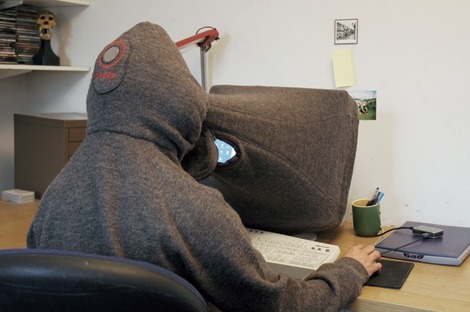
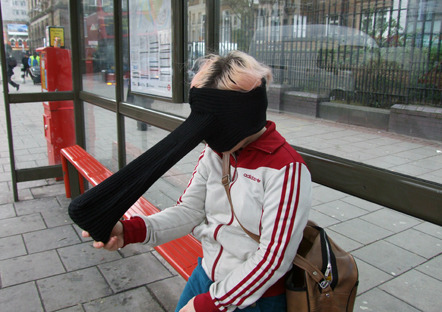
Two fascinating projects by Joe Malia and aimed at exploring design for the “computer obsessive”: a “computer hood” and a “scarf/Playstation tunnel”, to “facilitate an amplified engagement between user and the computer, secluding them in a digital enclosure where the outside world is a memory and attention undivided”.
 A friend of mine had a baby recently, (in fact most of my friends seem to be having babies recently, must be a life-stage thing). Living abroad, we were keen to see the little fella, but she was reticent to upload pictures to Facebook.
A friend of mine had a baby recently, (in fact most of my friends seem to be having babies recently, must be a life-stage thing). Living abroad, we were keen to see the little fella, but she was reticent to upload pictures to Facebook.
Here’s a thought: as soon as a mother announces the arrival of a child, she’s publishing his date of birth and mother’s name. The answers to those most basic of security questions are already public.
This has got me thinking about the wider question of public data (I’m aware it’s a VERY wide question). To date, much of my publicly available information has either been created or curated by me. I have quite a bit of control over my public image and privacy, as I’ve grown with the network. Children born into the network are public beings. Their personality, pictures and data is liberally spread into servers by their parents before they can even string a sentence together. I foresee a generation of kids reaching their teens and spending hours deleting this parentally curated history, as they strive to define themselves in their own image.
But they won’t catch it all, will they.
Sports have always kept a tight relationship with data to measure performances. It has been particularly the case to improve athletes capabilities with motion analysis or objectify team sports that are easily fragmented into single events (e.g. Sabermetics). With new means of producing statistics through video and sensor technologies, other sports have started the search for objective knowledge. In the domain of football (i.e. soccer) companies such as Prozone and Opta Sports have led the innovation in data collection. In parallel, some academics have been exploring this new terrain to apply their statistics-led methodology (see A network theory analysis of football strategies). Similarly, designers have also started to transform these new measures (often in real-time) into sophisticated visualization to augment the spectator’s experience (see In-screen sports graphics).
At Near Future Laboratory, we regularly investigate the implications of the emerging presence of data particularly in the domain of the city and its services. Our work requires the joint understanding of space (e.g. a territory, its rules, cultures, history), of the networks that compose the space (both physical infrastructures and digital activities) and the human behaviors manifasted in that space. As part of our self-started initiatives, we enjoy employing these prisms to explore other intriguing domains such as football. In this ‘pet project’, we collaborated with the prospective consultant Philippe Gargov of [pop-up] urbain, connoisseur and writer on the use of statistics in football (see Passer aux stats supérieures) to augment his knowledge of football and tactics with prototyped visualizations that revealed the layout of teams through the average position of players, the key players in the passing game and the orientation each player gives to the game. We called this experiment Footoscope.
Footoscope provides a perspective on the morphology and tactics of a football team according to raw data on its passing game (e.g. passes between players, positions of the players when receiving the ball, playing time) transformed into indicators (e.g. “betweenness”) and visualizations (e.g. flows in the passing game, orientation of the propagation of the ball, layout of the team). We prototyped it with Quadrigram in order to share the tools with amateurs who want to become ‘footoscopists’ and decipher data on team they know or want to explore. We tested to tool with Philippe Gargov based on the raw statistics of the World Cup in South African accessible on the FIFA web site. Philippe did a great job in mixing his knowledge on the competition with the use of Footoscope. The results (in French) discuss, for instance, the key role of Bastian Schweinsteiger in Germany’s midfield that other players such as Stankovic or An Yong Ha failed to reproduce; or the incapacity for Switzerland to manage the distances between its lines. Read more (in French) on the Footoscope web site.
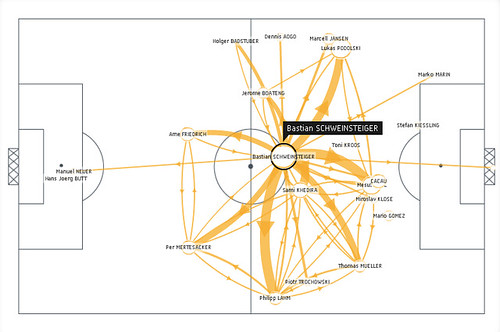
The key role of Bastian Schweinsteiger in Germany’s midfield, perfectly centered and well-connecter. More on Footoscope.

The incapacity for Switzerland to manage the distances between its lines, with its defense and strikers compacted at a short distance. This contrasts with a more balance team that takes a greater advantage of spaces such as Chile below. More on Footoscope.
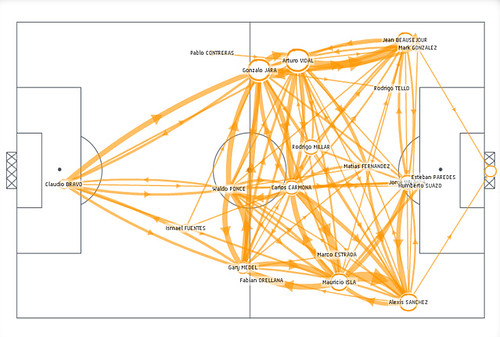
Why do I blog this: Our pet projects are meant to explore new domains and ideas. Like other domains (e.g. cities, organizations) the analysis of football request the understanding of space, networks (data) and behaviors (observations). The collaboration with Philippe Gargov revealed some early insights on generating the dialogue between statistics and amateur knowledge of the terrain to produce a new apprehension of the game.
Two interesting project I saw yesterday at the Pecha Kucha organized at Art Center College of Design in Pasadena:
A Machine Frame of Mind by Brooklyn Brown:
“As the computational environments that surround us rapidly become more sophisticated will we continue to trust them more? If the computer can’t see something, does it not exist? When the world can be read by humans and machines, the way we perceive and interpret it will be radically different. (…) This research trajectory reveals the machine perspective as a source of pleasure, the result of radically different analytical capabilities, and the complicated creation of the abstract, computerized self.
The project suggests that the machine-readable world is something we are both constructing and should continue to design for in order to demystify and expose advanced technological processes.“
Be My Satellite by Bora Shin
About geospatial literacies:
“BeMySatellite is an initiative that aims to allowevery individual on Planet Earth to be uniquely documented by satellites.
The ultimate goal of this project is for everybody to appear at least once in a publicly accessible satellite image (such as on Google, Yahoo and Bing).
Using social network systems like Twitter andFacebook, we will assign instructions for participants to make a mark in certain locations when satellites will be passing overhead.“
Why do I blog this? Two intriguing projects that I find relevant. If the former is close to “machine culture” issues that I’m interested recently, the second one is close to my long-time exploration of geospatial practices.
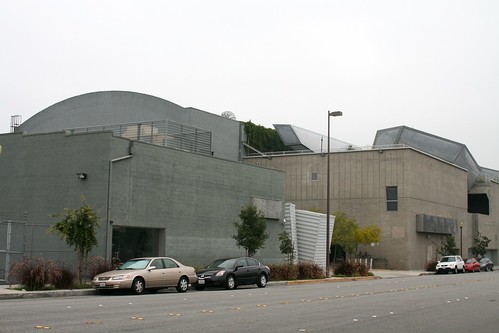
So, as I mentioned the other day, I’m in Los Angeles this summer, being a visiting researcher at the Art Center College of Design in Pasadena. The project I’m working on there is called “CURIOUS RITUALS: Gestural Interaction in the Digital Everyday” and we’ve just set up a blog about it.

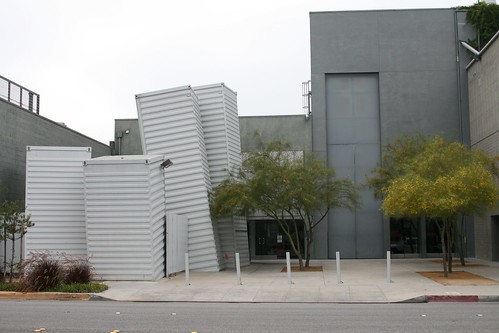
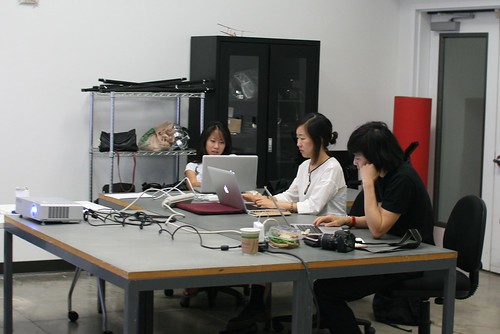
It’s actually a 7-weeks project conducted by Katherine Miyake, Nancy Kwon, Walton Chiu from the media design program and myself.
This research project is about gestures, postures and digital rituals that typically emerged with the use of digital technologies (computers, mobile phones, sensors, robots, etc.): gestures such as recalibrating your smartphone doing an horizontal 8 sign with your hand, the swiping of wallet with RFID cards in public transports, etc. These practices can be seen as the results of a co-construction between technical/physical constraints, contextual variables, designers intents and people’s understanding. We can see them as an intriguing focus of interest to envision the future of material culture.

The aim of the project is to envision the future of gestures and rituals like the one above based on:

… oh and btw, I’ve been quiet here because I’ve been busy on different fronts:
- relocating to California for the summer, doing a “visiting researcher” residence at Art Center College of Design in Pasadena, working on a project about gesture (that I’ll blog about as soon as there is something to show)
- writing the game controller book which is going to be published in French in January 2013. Called “Joypads! Le design des manettes” and written with Laurent Bolli, it’s going to be an overview of the evolution of video game console controllers over time. We’re of course looking for an English/American edition if anyone here has en idea about how to proceed
- near future laboratory projects (a short project about car culture, a design workshop that Julian mentioned few weeks ago, planning Lift13 and Lift France 12)
- experimenting what it’s like staying in one city for two months (and avoiding travels)
Recently the independent culture research lab ZZZINC interviewed me for the Mosaic online magazine. It was a pleasure to answer Paco González‘ questions on our practice at Near Future Laboratory and our work on urban data. The result is now online: Entrevista a Fabien Girardin (English version).